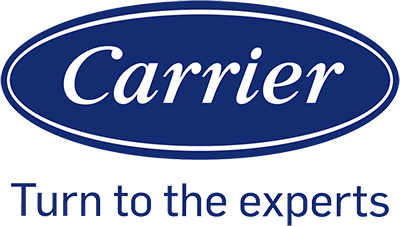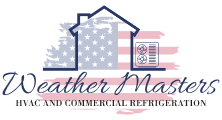When we think about energy-efficient home design, we often focus on insulation, windows, or appliances. What we sometimes overlook is the role of clean air ducts. Clean air ducts help heating and cooling systems run more efficiently, which lowers energy use and reduces costs.
By keeping dust and debris out of the system, we allow air to move freely and evenly through the home. This simple step supports both comfort and performance. It also connects directly to better indoor air quality, which affects how we feel day to day.
As we look closer, we can see how air duct cleaning ties into energy efficiency, health benefits, and long-term maintenance. Understanding these connections helps us make smarter choices about home design and care.
How Air Duct Cleaning Impacts Energy-Efficient Home Design
Clean ductwork supports better airflow, reduces strain on heating and cooling systems, and helps lower energy use. By keeping air ducts free of dust and buildup, we can improve system performance and reduce wasted energy.
The Role of Air Ducts in Modern Homes
Air ducts move heated or cooled air from the furnace, air conditioner, or heat pump to each room. They act as the main pathway for distributing air throughout the home. If ducts are blocked, leaking, or dirty, airflow becomes uneven and less efficient.
In modern homes, ductwork often runs through walls, ceilings, and floors. This design hides the system but also makes it harder to notice problems like dust buildup or leaks. Because of this, issues can go unnoticed until energy consumption rises or comfort levels drop.
When ducts remain clean, the heating and cooling system can deliver air more evenly. This means rooms reach the desired temperature faster, and the system does not need to run as long. Clean ducts also help reduce wear on fans and motors.
Connection Between Duct Cleaning and Energy Efficiency
Dust, pet hair, and other debris inside ducts restrict airflow. Restricted airflow forces the HVAC system to work harder to push air through. This extra effort increases energy consumption and raises utility bills.
Regular duct cleaning supports improved energy efficiency by removing these blockages. When air moves freely, the furnace or air conditioner cycles on and off less often. This reduces the amount of electricity or fuel needed to maintain comfort.
We also see fewer temperature differences between rooms when ducts are clear. Balanced airflow reduces the need to adjust the thermostat, which prevents unnecessary energy use. Over time, this leads to measurable energy savings.
Key benefits of clean ducts for energy efficiency:
- Lower strain on HVAC fans and motors
- Reduced heating and cooling cycles
- More consistent indoor temperatures
- Lower monthly utility bills
Optimizing HVAC System Performance
The HVAC system depends on ductwork to move air efficiently. If ducts are dirty, the system cannot perform at its best. Fans, coils, and furnaces may run longer than needed, which shortens their lifespan.
By cleaning ducts, we help the system operate closer to its intended design. This means the furnace and air conditioner do not waste energy overcoming blockages. In turn, the system maintains efficiency for a longer period.
Clean ducts also support better indoor air quality. While this does not directly change energy use, it reduces strain on filters and fans. With less buildup, the HVAC system stays cleaner overall, which helps maintain steady performance.
When we combine duct cleaning with regular filter changes and system tune-ups, we create a more reliable and energy-efficient heating and cooling system. This approach reduces breakdowns, lowers repair costs, and supports long-term energy savings.
Health and Indoor Air Quality Benefits
Clean air ducts help limit the spread of dust, allergens, and other indoor air pollutants that affect our health. They also reduce the chance of microbial contamination, which can cause problems like mold growth and respiratory issues.
Reducing Allergens and Pollutants
When ducts collect dust, pollen, and pet dander, these particles circulate through the air we breathe. This buildup can trigger allergies and asthma, especially in sensitive individuals. By removing these materials, we improve indoor air quality and reduce exposure to common irritants.
Household dust often contains dust mites, smoke particles, and pesticides. These pollutants stick to duct surfaces and re-enter the air each time the system runs. Regular cleaning lowers the amount of these indoor air pollutants and helps keep our living spaces healthier.
We also reduce the risk of carbon monoxide and other harmful gases mixing with circulated air. While cleaning ducts does not remove every pollutant, it limits the most common allergens that affect daily comfort.
Preventing Mold and Bacteria Growth
Moisture inside ducts creates a breeding ground for mold, mildew, and bacteria. When mold spores spread through the system, they can settle on walls, furniture, and other surfaces. This not only damages property but also raises health risks.
Cleaning ducts helps remove mold spores and microbial contamination before they grow into larger colonies. It also reduces the musty odors often linked to mold and mildew. Keeping ducts dry and clean lowers the chance of bacteria spreading through the system.
We also prevent hidden growth in areas we cannot see. Even small amounts of moisture can support mold growth, so regular inspection and cleaning play a key role in keeping air safe.
Supporting Respiratory Health
Poor IAQ can worsen respiratory issues such as asthma, bronchitis, or other lung disease. Pollutants like dust, smoke, and pet dander make it harder to breathe, especially for children and older adults. Clean ducts reduce the number of irritants that reach our lungs.
For those with allergies, fewer allergens in the air means fewer flare-ups. People with asthma often notice less wheezing or coughing when indoor air pollutants are reduced. Clean ducts support a more stable breathing environment.
By lowering exposure to mold spores, bacteria, and dust mites, we also cut down on long-term risks linked to respiratory health. This makes duct cleaning an important step in improving IAQ for everyone in the home.
Professional Versus DIY Air Duct Cleaning
We can choose between hiring a professional air duct cleaning company or trying to handle the task ourselves. Each option has clear benefits and drawbacks that affect cost, results, and long-term efficiency.
Advantages of Professional Air Duct Cleaning
Professional duct cleaning services use specialized equipment that reaches deep into the system. High-powered vacuums, rotary brushes, and negative air machines remove debris more effectively than household tools. This process can reduce dust buildup and help improve airflow.
Many air duct cleaning companies follow standards set by NADCA (National Air Duct Cleaners Association). These guidelines ensure that the cleaning process meets industry requirements. When companies follow these standards, we can expect more consistent results.
A professional air duct cleaning service also provides trained technicians who know how to identify problems such as leaks, mold, or damaged ductwork. Detecting these issues early can prevent costly repairs later.
The EPA (U.S. Environmental Protection Agency) notes that duct cleaning may be helpful when there is visible mold growth, pests, or heavy dust. Professionals are better equipped to handle these situations safely.
While the cost of duct cleaning can range from a few hundred to over a thousand dollars depending on home size and system complexity, the service often saves us time and effort. It also reduces the risk of incomplete cleaning.
Limitations of DIY Methods
When we attempt DIY air duct cleaning, we usually rely on a household vacuum, brushes, or simple tools. These methods may remove surface dust near vents but rarely reach deeper sections of the ductwork.
DIY cleaning often misses contaminants such as mold or pet dander that settle further inside. Without proper equipment, we risk spreading dust into the air instead of removing it. This can make indoor air quality worse.
Another challenge is safety. Handling ducts without training may cause accidental damage to insulation or seals. This damage can reduce energy efficiency and lead to higher utility costs.
We also lack the ability to measure results. Unlike professional duct cleaning services, DIY methods provide no clear way to confirm whether the ducts are fully cleaned. This uncertainty often leads to repeated effort without real improvement.
In most cases, DIY cleaning works only as a short-term measure for light dust near registers. It does not replace regular air duct cleaning performed by trained professionals.
Choosing Reliable Duct Cleaning Companies
Not all air duct cleaning companies provide the same quality of service. We need to research carefully before hiring. Checking certifications, reviews, and references helps avoid poor results.
A trustworthy air duct cleaning company should follow NADCA standards and explain their process clearly. We should ask for a written estimate that lists the services included, such as cleaning supply ducts, return ducts, registers, and air handler components.
The Environmental Protection Agency advises homeowners to avoid companies that make sweeping claims about health benefits. Instead, we should look for providers who focus on specific problems like mold, pests, or visible debris.
It also helps to compare pricing. While the cost of duct cleaning varies, unusually low prices can signal incomplete service. Reliable companies usually charge based on home size and system complexity.
To make the best choice, we should:
- Verify certification and training
- Ask for proof of insurance
- Request a detailed written contract
- Review customer feedback
By following these steps, we increase the chance of hiring a professional duct cleaning service that delivers effective results without unnecessary costs.
Best Practices for Maintaining Clean and Efficient Air Ducts
We can keep our air ducts working efficiently by focusing on regular inspections, using quality filters, and reducing sources of contamination. These steps help limit dust, improve airflow, and lower energy use in our homes.
Routine Maintenance and Inspection
We should schedule professional inspections of our air ducts every few years. This helps us identify leaks, blockages, or damage that can reduce airflow and waste energy. Even small gaps in return air ducts or supply lines can lead to higher heating and cooling costs.
Regular home maintenance also includes checking air vents for dust buildup. Wiping the grilles and vacuuming around them prevents dirt from entering the ducts. When we notice uneven airflow or unusual odors, that often signals the need for a closer inspection.
It is also useful to keep a record of past cleanings and repairs. Tracking this information helps us plan future service and avoid unnecessary work. Consistent care ensures our ducts stay in good condition and continue to support efficient heating and cooling.
Upgrading Air Filters and Ventilation
Air filters play a major role in keeping our ducts clean. We should replace disposable filters every 1–3 months, depending on usage and indoor air quality. High-efficiency filters capture smaller particles, which reduces dust inside the ducts and improves indoor air.
In homes with pets or allergies, upgrading to HEPA filters or pairing the system with an air purifier can make a noticeable difference. Cleaner filters also protect the blower motor and other HVAC components from strain.
Good ventilation design matters as well. Making sure return air ducts are clear and not blocked by furniture keeps airflow balanced. If we live in a humid climate, insulated ducts help prevent condensation, which reduces the risk of mold growth inside the system.
Preventing Contamination and Moisture Issues
Moisture inside ducts can lead to mold and bacteria growth. To prevent this, we should check for leaks in duct joints and around air vents. Sealing these areas with proper materials reduces the chance of outside air and humidity entering the system.
We also need to control indoor humidity levels. Using a dehumidifier or ensuring proper ventilation in bathrooms and kitchens helps limit moisture buildup. This step is especially important in basements, where damp air often collects.
Another way to prevent contamination is by keeping the area around vents clean. Avoid placing rugs, plants, or furniture directly over vents, since they can trap dust and restrict airflow. By keeping ducts dry and free from debris, we help protect both energy efficiency and indoor air quality.




